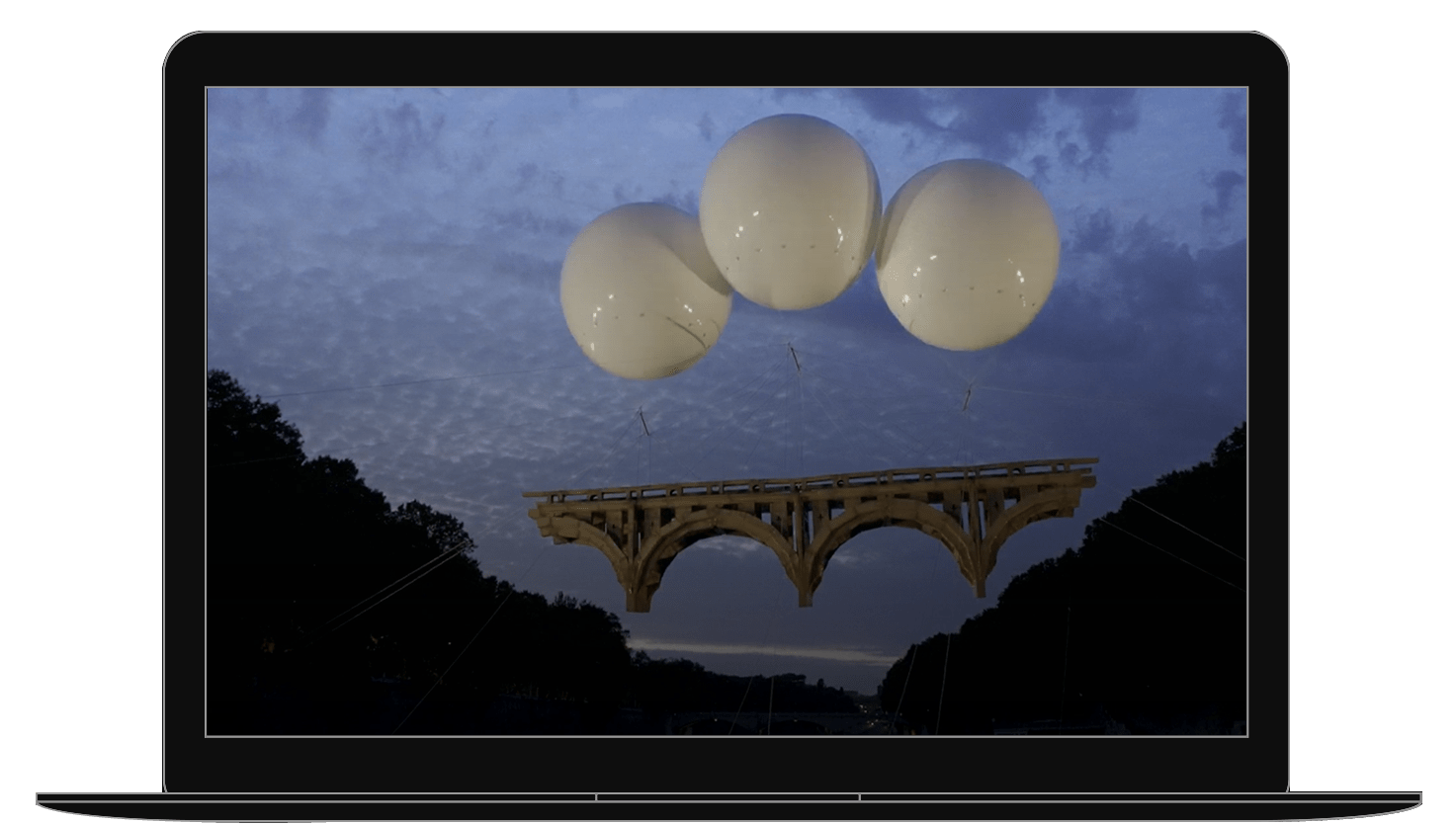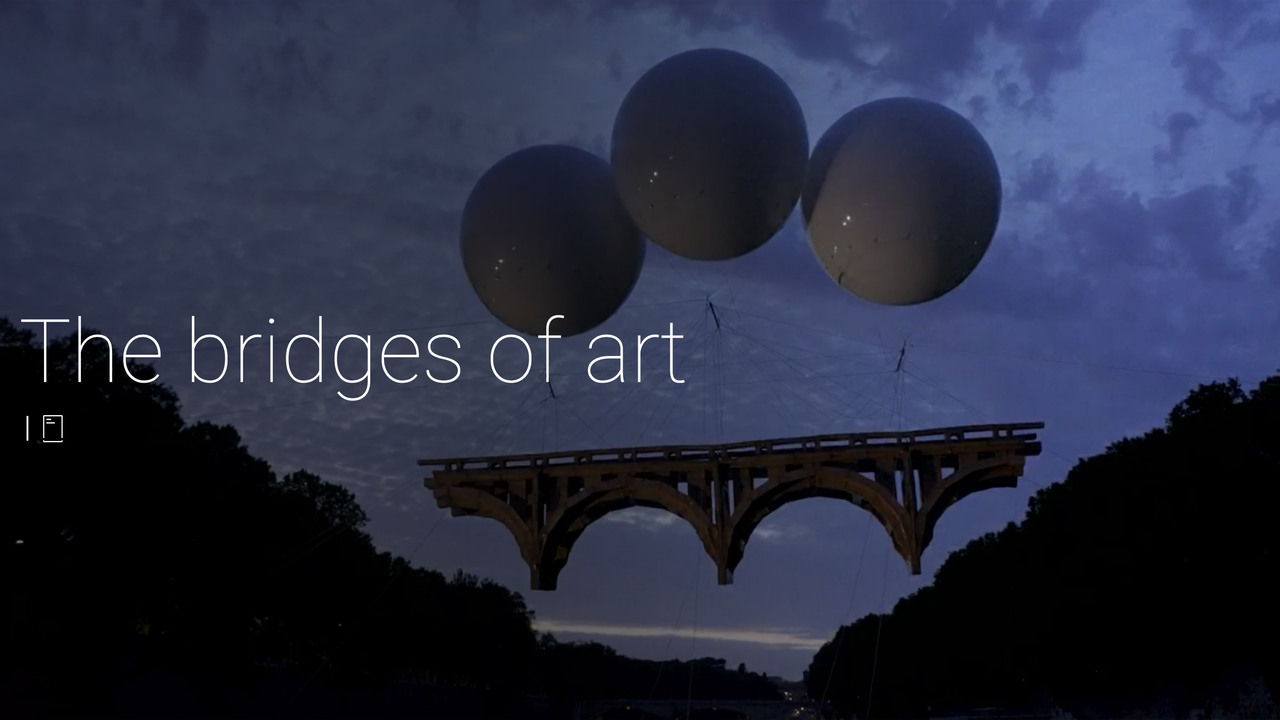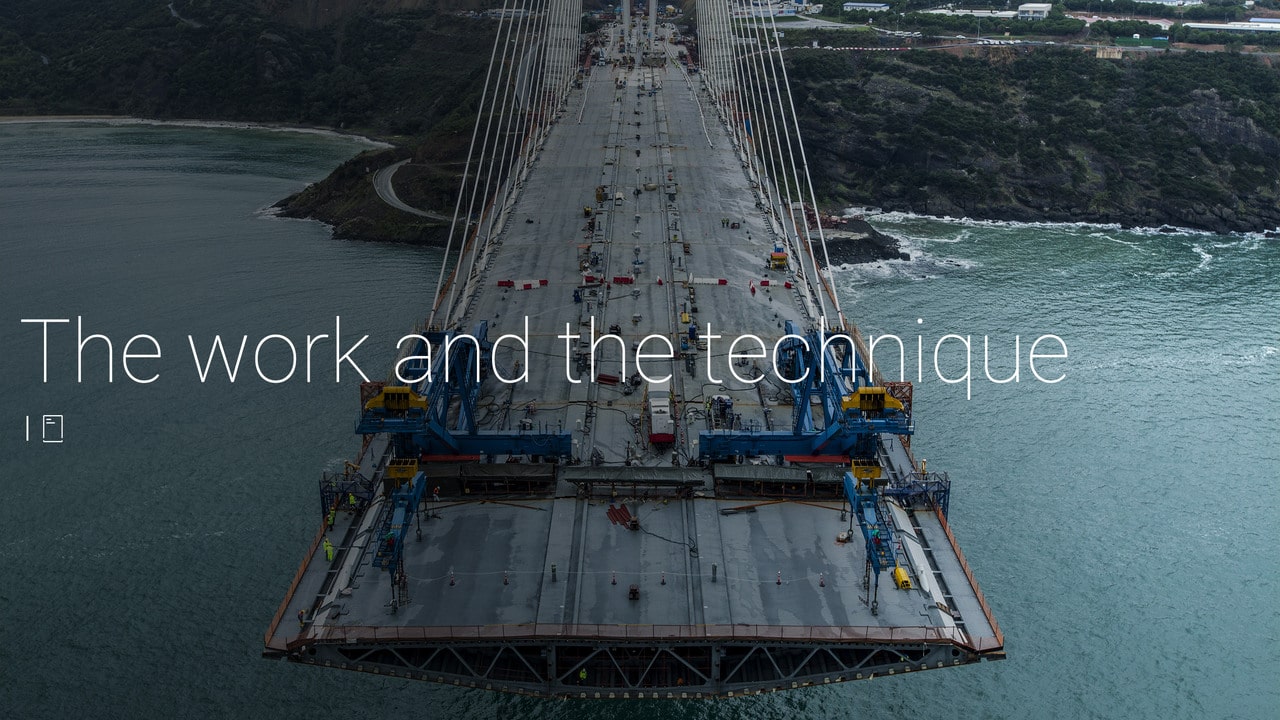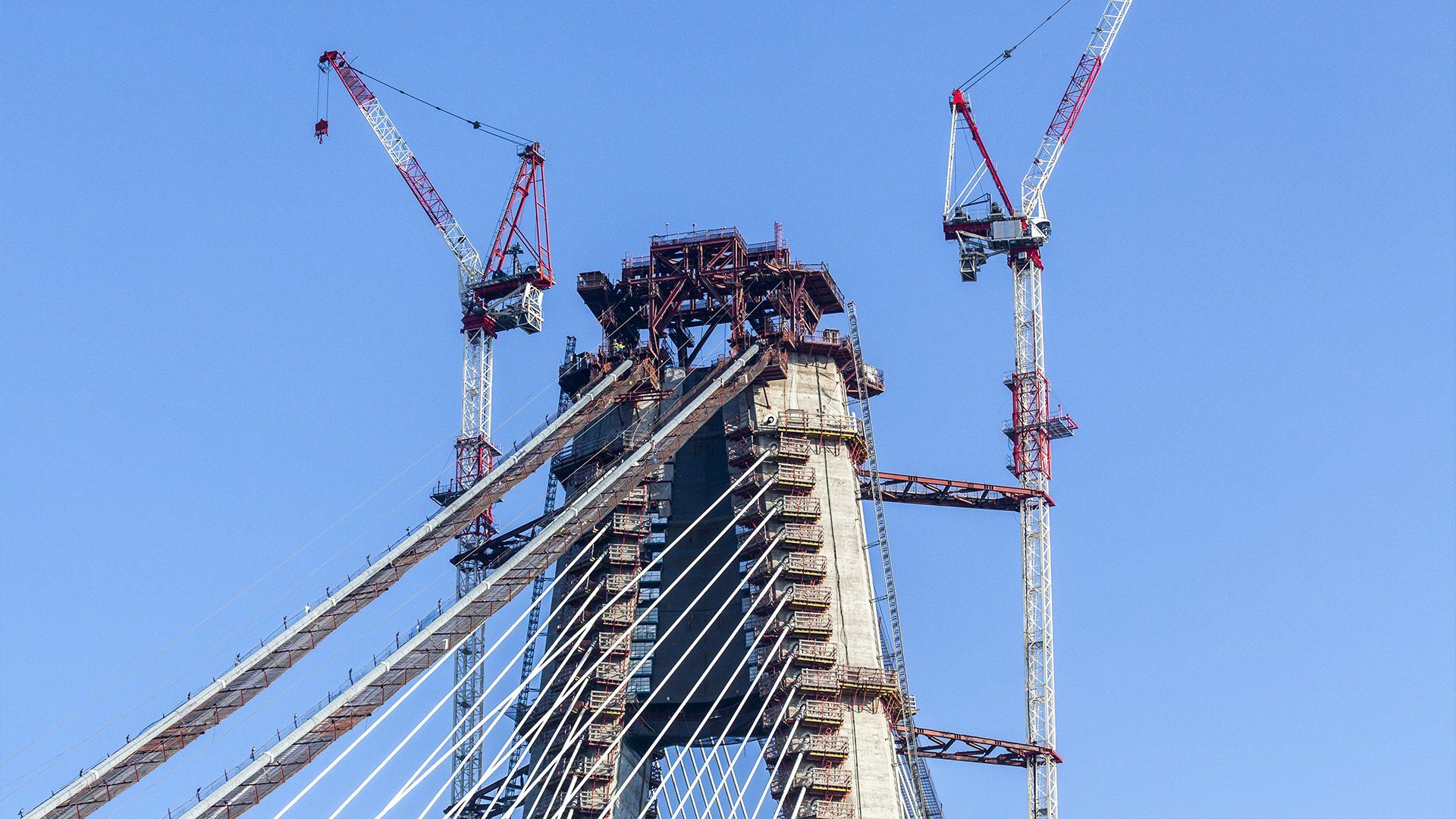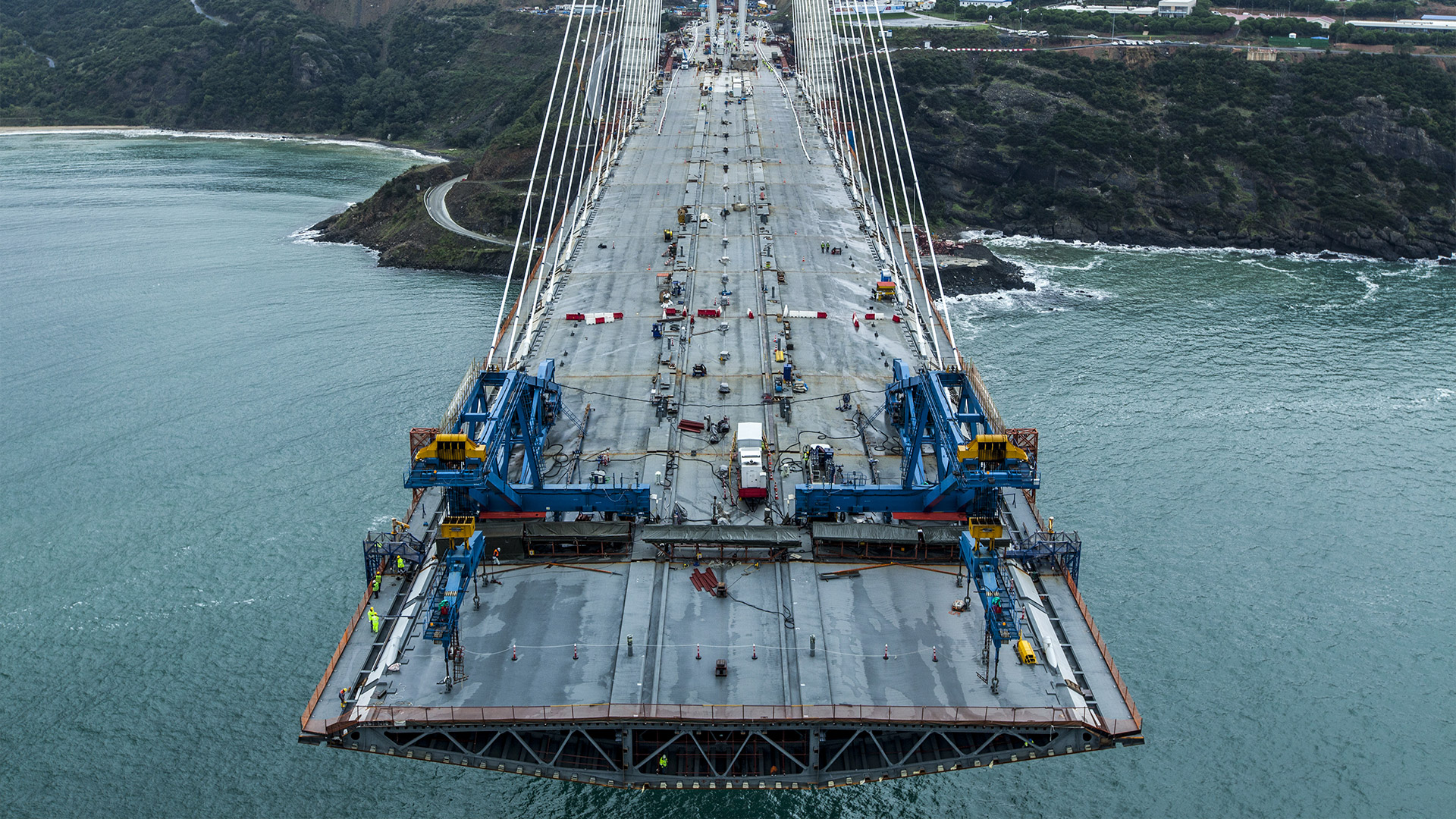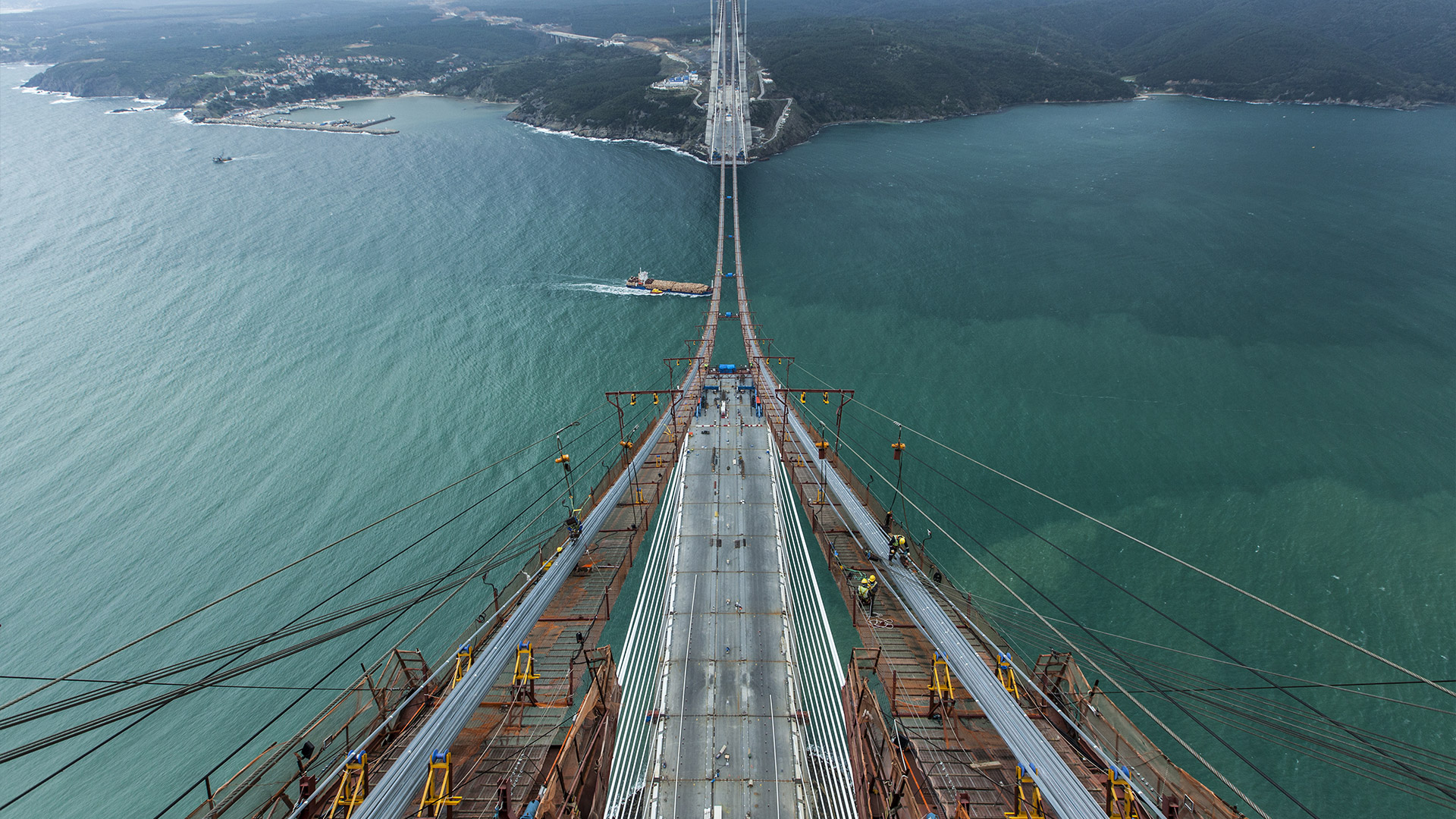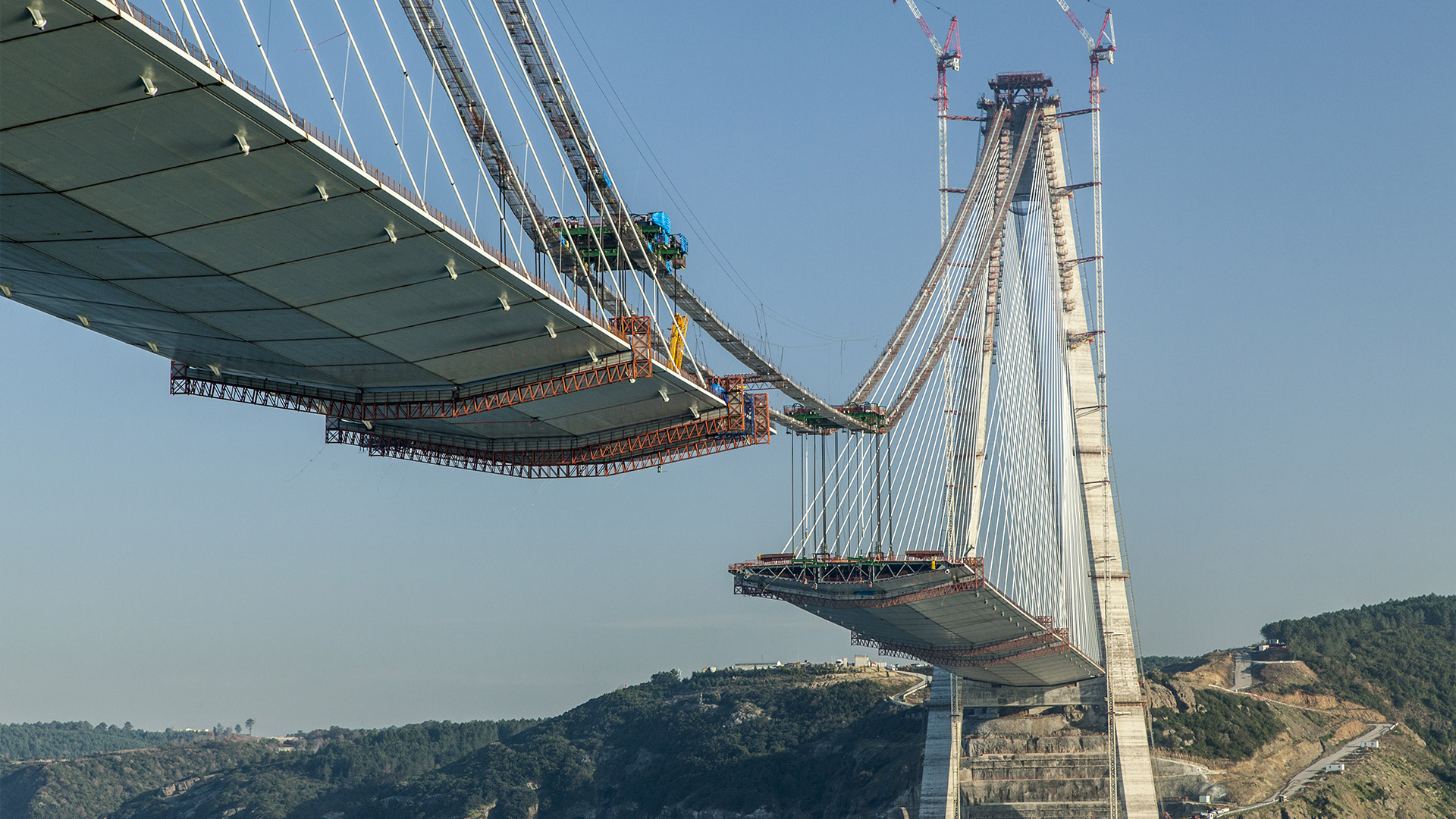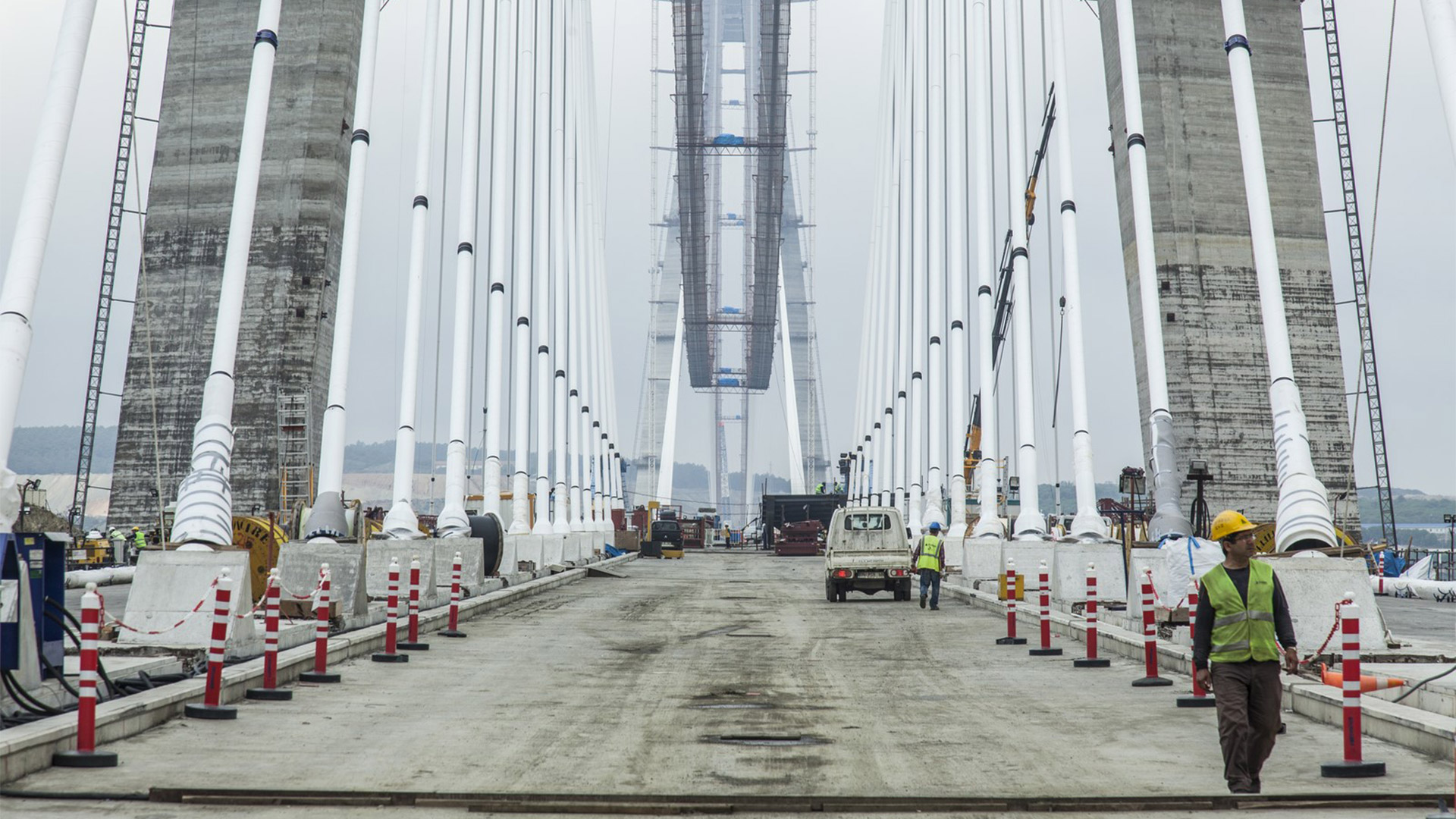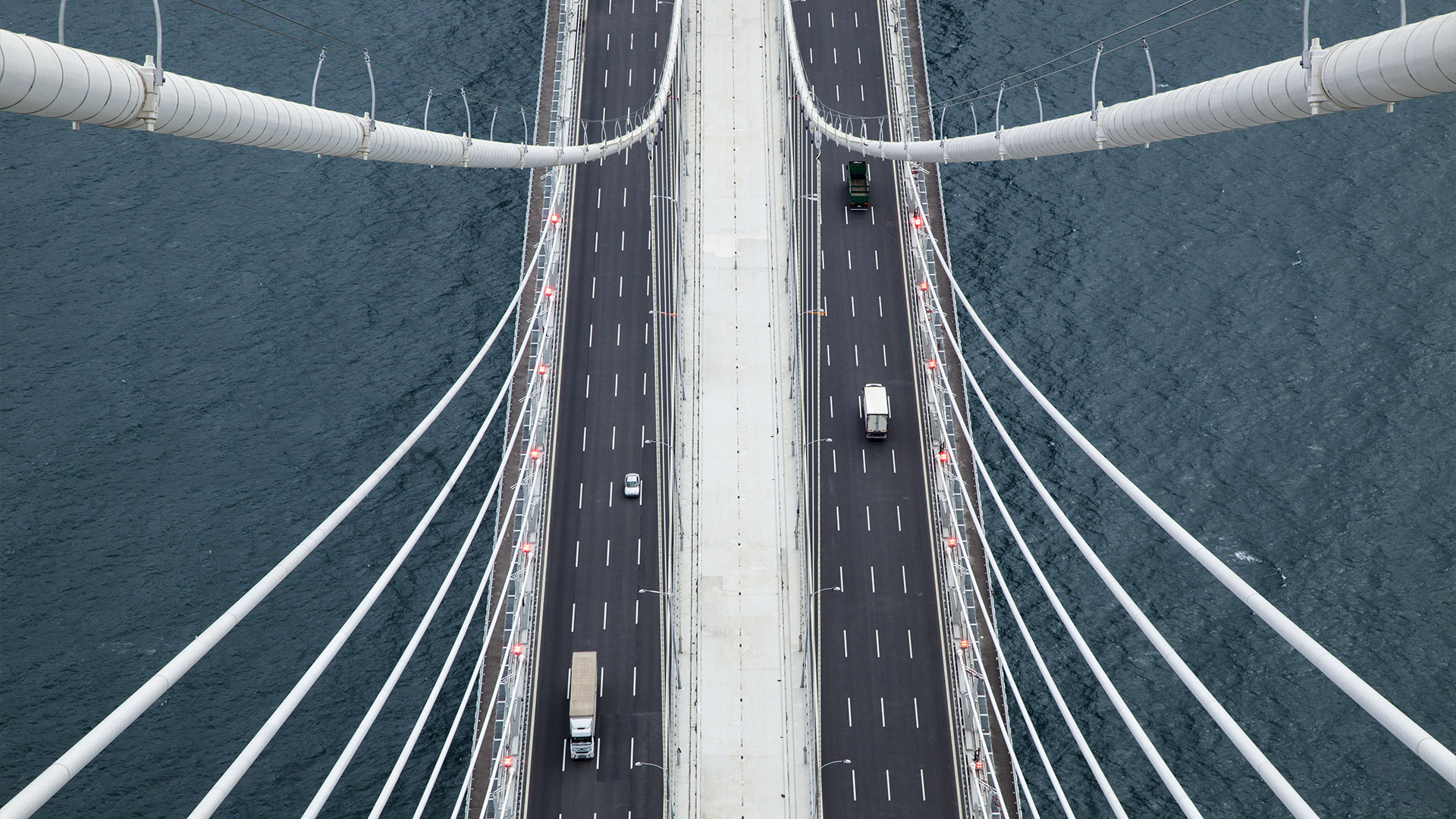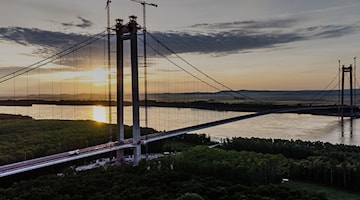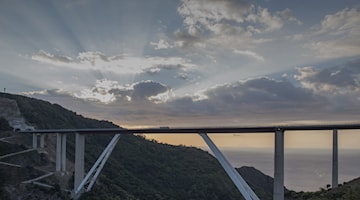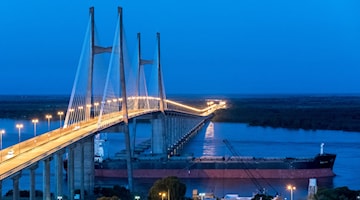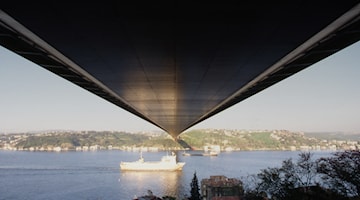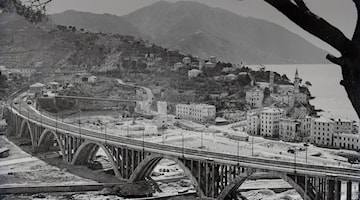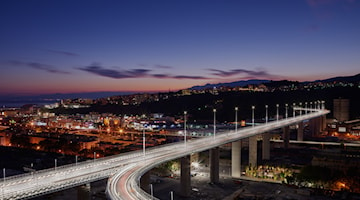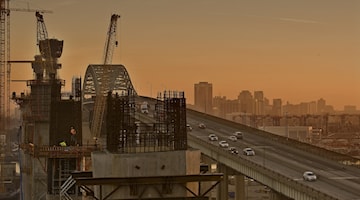The bridge of records
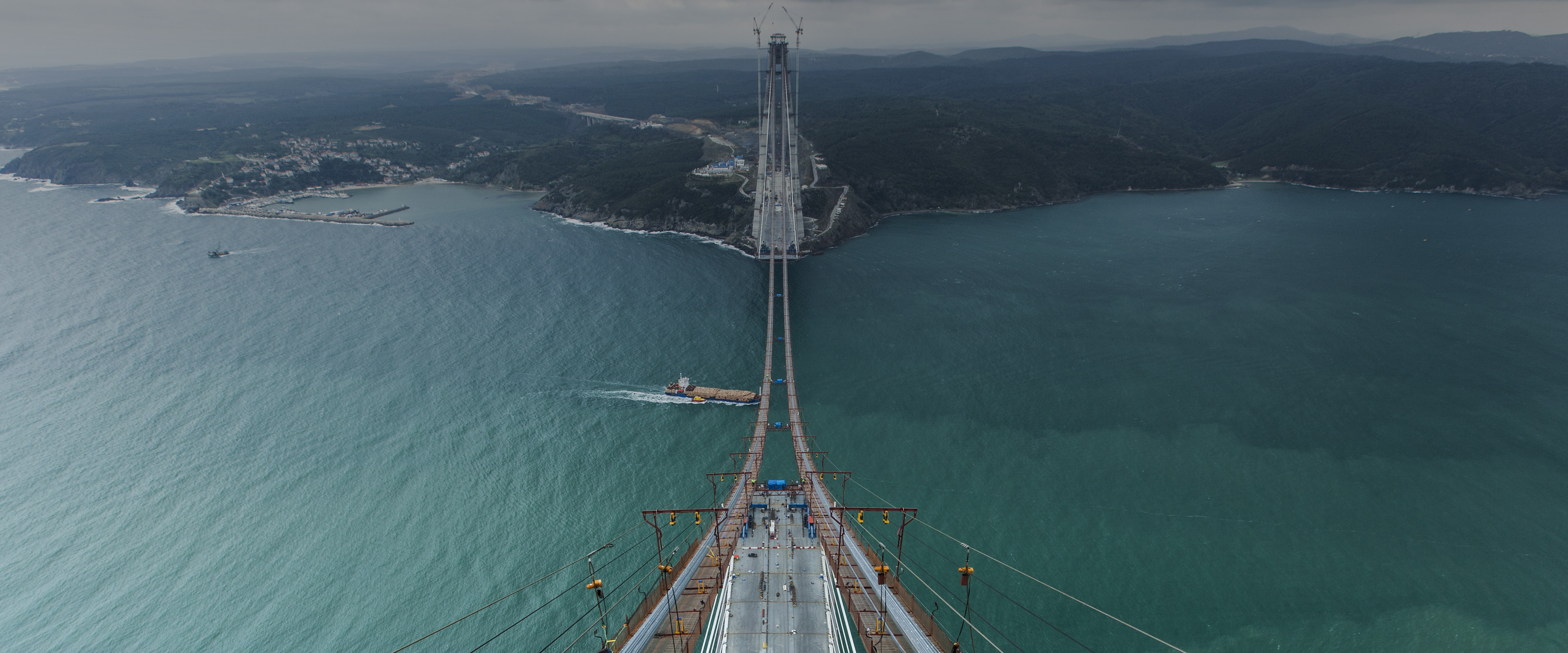
THIRD BOSFORUS BRIDGE, TURKEY
Selim I, known as the "cruel one" or the "the resolute" was a sultan of the Ottoman Empire from 1512 to 1520, the year of his death. To rise to power he urged his father to abdicate and killed his brothers and all possible successors, taking the Ottoman civil war to an end, starting a prosperous expansion period.
The Third Bosphorus Bridge is dedicated to him. With the first bridge, inaugurated in 1973 and the second, which was dedicated to Muhammad II and built between 1985-88, it too joins the European side of Istanbul to the Asian side of the city.
Inaugurated in 2016, after 27 months of works, designed by the great French engineer Jean-François Klein (1961-2018), the Yavuz Sultan Selim Bridge connects, to be precise, the town of Garipçe to Poyrazköy,, two districts of the province of Istanbul, which overall has 16 million residents, in a nation that went from 8.6 million vehicles in 2022 to 22.3 million in 2022.
The car is the most used means of transport in Istanbul. This causes immense traffic congestion that makes car drivers loose on average 62% of extra time compared to when traffic flows smoothly.
This is why the Third Bridge is an infrastructure of primary importance. It's a record bridge. And the only bridge in the world to have two pedestrian and bike pathways (on its external borders, which are 2.5 metres wide). It also has an 8 lane highway (4 lanes per direction) which are separated by a double-track railway line (the speed limit is 120 km/h for cars, 160 km/h for passenger trains and 80 km/h for freight ones).
Overall, it provides 120 thousand daily crossings. To build it, 241,00 m3 of concrete were used, and 96,000 tons of steel. 897,000 m3 of earth were excavated. When it was built, it was the longest and widest hybrid bridge in the entire world (59 metres) with the longest main span, with a railway line (extending for 1,408 metres, built in steel with 24 metre-long segments, each weighing 840 tons).
Supporting this span, the two A-shaped towers, the highest in the world (over 320 metres, made of concrete and steel with earth foundations), even higher than the Eiffel Tower. The Third Bridge is part of a huge widening and upgrading project of the Otoyol 7 highway, north of Istanbul, a new section that is the city's most external beltway, and the third road crossing of the Bosphorus.
Besides greatly decreasing, it also provides connections to the nations' main highways, while creating a commercial corridor towards Greece that is both fluid and more functional.
The bridge is elegant and sustainable. With the new highway section it serves 40 million people, using renewable energies. Also, 5,100,000 new trees will be planted in 3-5 years.
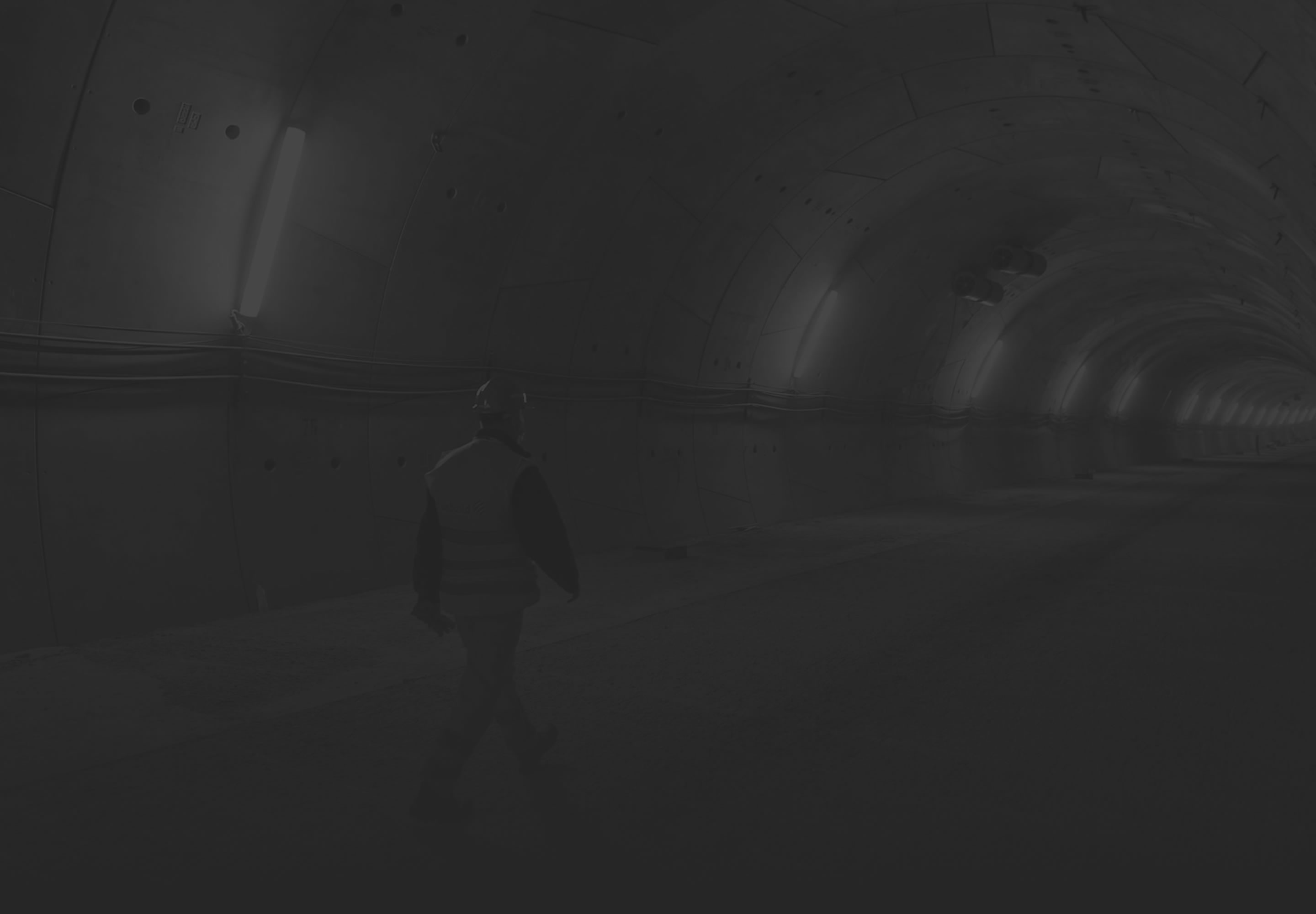
THE WORK AND THE TECHNIQUE
M3 OF CONCRETE
T OF STEEL
M3OF OPEN AIR EXCAVATIONS
General Directorate Highways – KGM (Karayollari Genel Mudurlugu)
Gruppo Astaldi (merged into the Webuild Group) and the ICA IC Içtas–Astaldi JV
Works on the Third Bridge on the Bosphorus were awarded to a joint venture led by the Astaldi Group, today part of the Webuild Group.
The bridge was designed using all types of technology and know how in terms of structural engineering, advanced calculation models, quality know-how and the capacity of materials to perform, cutting-edge construction techniques and methods, also considering durability needs.
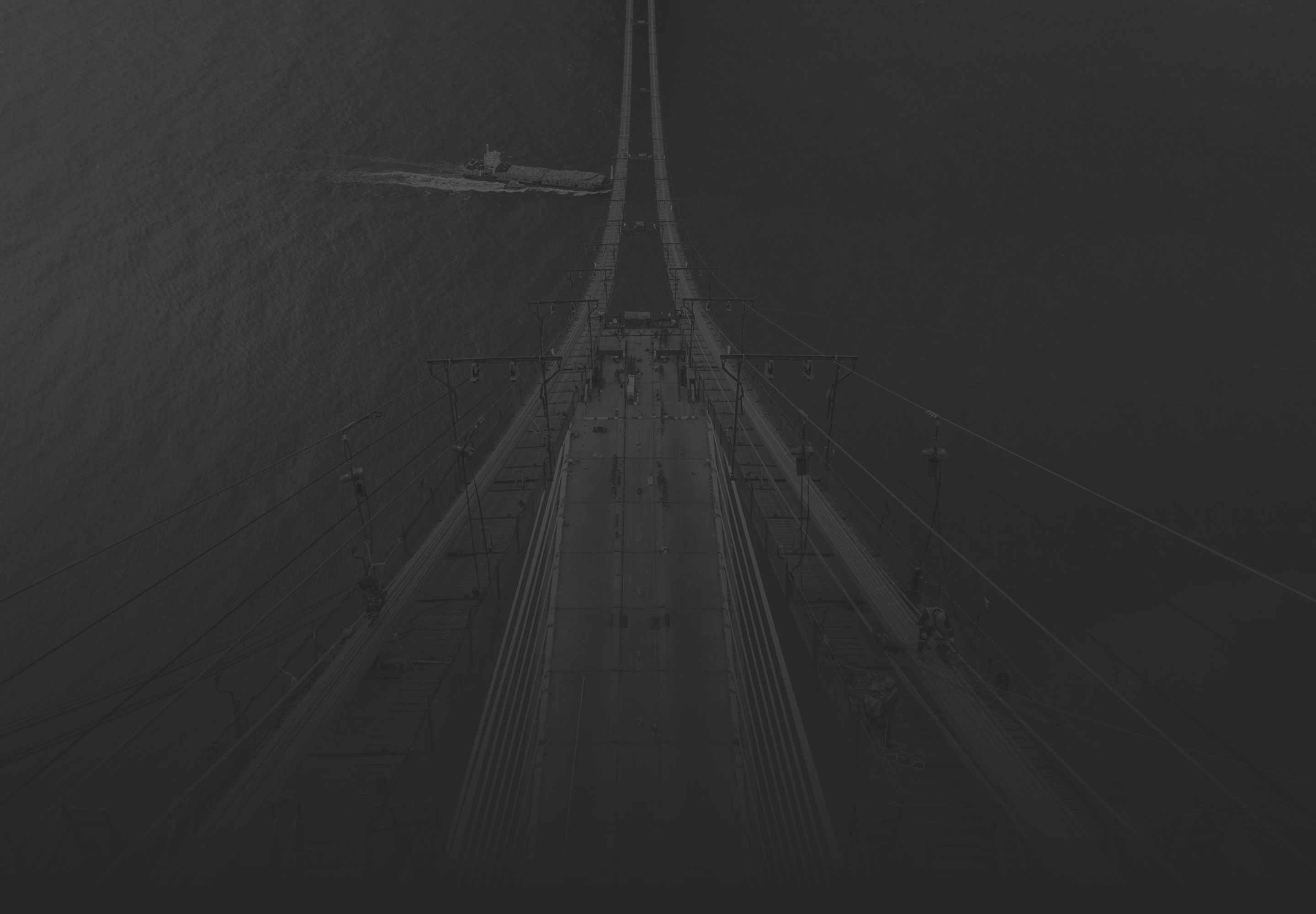
CULTURAL INSIGHTS
